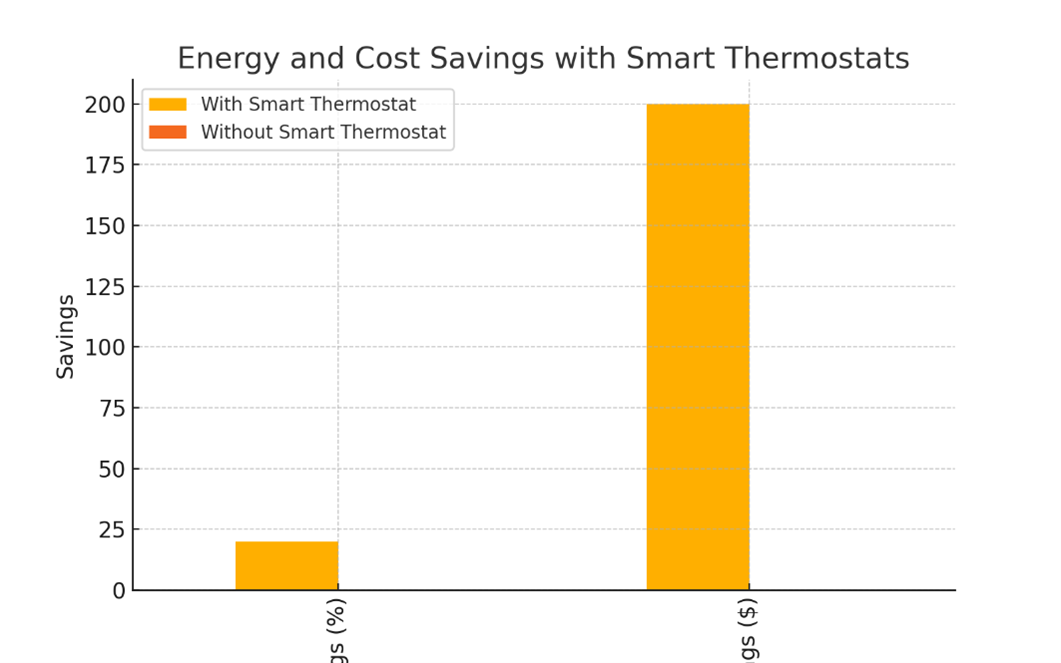Smart Home Technologies for Energy Efficiency
Energy Conservation ?? Comments 28/Jan/2025 TueSmart home technologies are revolutionizing the way households manage energy usage, offering both convenience and cost savings. These advanced systems use automation, data analysis, and connectivity to optimize energy consumption, reduce waste, and enhance overall energy efficiency. Below are practical steps for implementing smart technologies to achieve significant energy savings.
Practical Step
-
Install Smart Thermostats (e.g., Nest, Ecobee) to Adjust Heating/Cooling Automatically Based on Occupancy
Smart thermostats are among the most effective tools for improving energy efficiency in the home. These devices use sensors, Wi-Fi connectivity, and advanced algorithms to learn user behavior and preferences, adjusting heating and cooling schedules automatically. For instance, when the home is unoccupied, the thermostat can reduce energy usage by lowering or raising the temperature to conserve energy. Additionally, features like geofencing allow the thermostat to detect when residents are approaching home and adjust settings accordingly. Studies show that installing a smart thermostat can reduce heating and cooling costs by 10%-12% on average, with savings varying based on climate and user habits.
Many smart thermostats also provide real-time energy usage reports, helping homeowners identify patterns and opportunities for further savings. Some models, like Nest or Ecobee, integrate with other smart home devices, such as voice assistants, to provide seamless control and convenience.
-
Use Smart Plugs to Control Energy Usage for Specific Appliances Remotely
Smart plugs are a simple yet powerful tool for reducing energy consumption. These devices allow users to control the power supply to individual appliances remotely via a smartphone app. For instance, homeowners can schedule appliances like coffee makers, lamps, or entertainment systems to turn off automatically when not in use, preventing energy waste.
Smart plugs are particularly useful for addressing "phantom energy" consumption, where devices like chargers, TVs, and gaming consoles continue to draw power even when turned off. By using smart plugs, households can reduce standby energy consumption, which accounts for approximately 5%-10% of residential energy use. Advanced smart plugs also monitor energy usage for connected devices, providing insights into which appliances consume the most energy and allowing users to make informed decisions about their energy habits.
-
Integrate Smart Lighting Systems (e.g., Philips Hue, LIFX)
Smart lighting systems provide homeowners with precise control over lighting usage, allowing lights to be turned on, off, or dimmed remotely or on a schedule. These systems often include motion sensors that ensure lights are only active when someone is in the room. Additionally, smart lighting can be programmed to adjust brightness levels throughout the day, optimizing energy use and enhancing comfort. For example, dimming lights by 50% can save up to 40% on energy costs.
-
Adopt Energy Monitoring Systems
Comprehensive energy monitoring systems, such as Sense or Neurio, provide a detailed breakdown of household energy usage. These devices track energy consumption in real-time, identify energy-hungry appliances, and suggest actionable steps to improve efficiency. By gaining a deeper understanding of energy usage patterns, homeowners can take targeted actions to reduce waste and save money.
-
Implement Smart Window Treatments (e.g., Smart Blinds or Curtains)
Smart window treatments can be programmed to adjust based on time of day, sunlight levels, or indoor temperatures. For instance, blinds can automatically close during the hottest part of the day to reduce cooling loads in the summer or open during winter mornings to let in natural heat. These adjustments minimize the need for heating or cooling, contributing to energy savings.
-
Use Smart Appliances with Energy-Saving Features
Many modern appliances, such as refrigerators, washing machines, and dishwashers, come equipped with smart technology that optimizes energy use. For example, smart washing machines can schedule cycles during off-peak hours, while smart refrigerators can adjust cooling settings based on the amount of food stored. By connecting these appliances to a central smart home system, homeowners can maximize efficiency and monitor their energy usage easily.
-
Leverage Voice Assistants for Energy Control
Devices like Amazon Alexa, Google Assistant, or Apple HomeKit can integrate with smart home systems to provide voice-activated energy management. For instance, homeowners can use simple voice commands to adjust thermostat settings, turn off lights, or power down devices, making energy conservation effortless and accessible.
Key Benefits of Smart Home Technologies
-
Enhanced Convenience:
Smart home technologies automate energy-saving actions, reducing the need for manual intervention while providing greater control over household systems.
-
Cost Savings:
By optimizing energy use, smart home devices can lower utility bills significantly. Over time, the initial investment in these technologies often pays for itself through reduced energy costs.
-
Environmental Benefits:
Smart technologies contribute to a reduction in energy waste, lowering the household’s carbon footprint and supporting global sustainability efforts.
-
Real-Time Feedback:
Many smart systems provide detailed data on energy usage, empowering homeowners to make informed decisions about their energy habits and identify areas for improvement.
-
Increased Home Value:
Smart home upgrades are increasingly attractive to buyers, offering an added incentive for homeowners looking to sell their property in the future.
By integrating smart home technologies, households can significantly enhance energy efficiency, reduce costs, and enjoy a more sustainable and connected living experience.
Example: A homeowner used a smart thermostat to adjust heating schedules, saving $200 annually and reducing energy usage by 20%.

Tags: energy